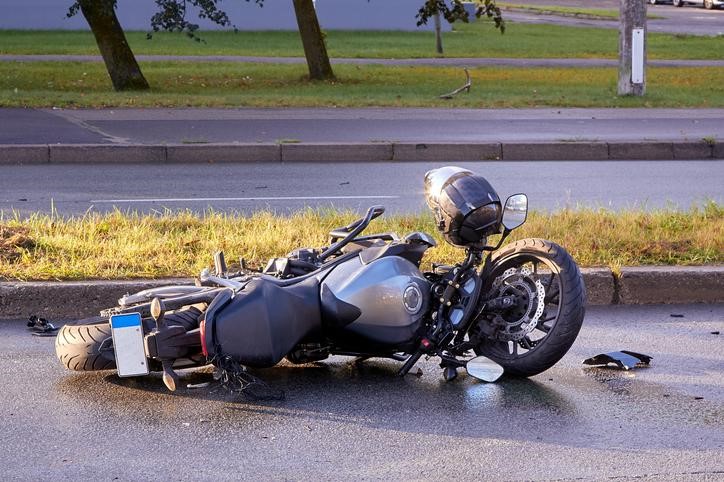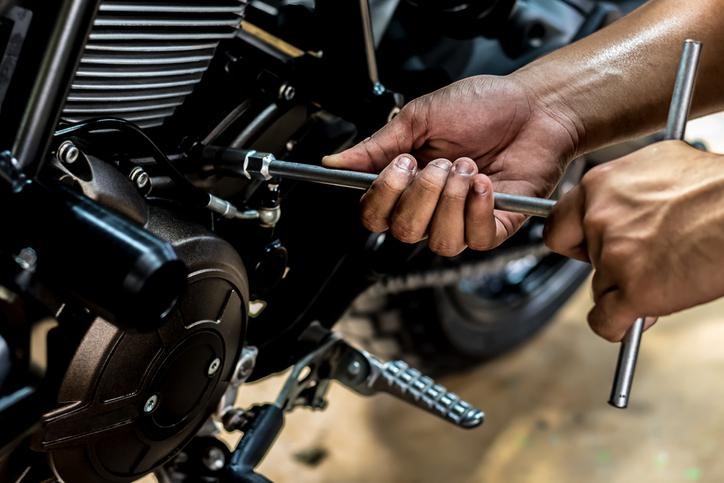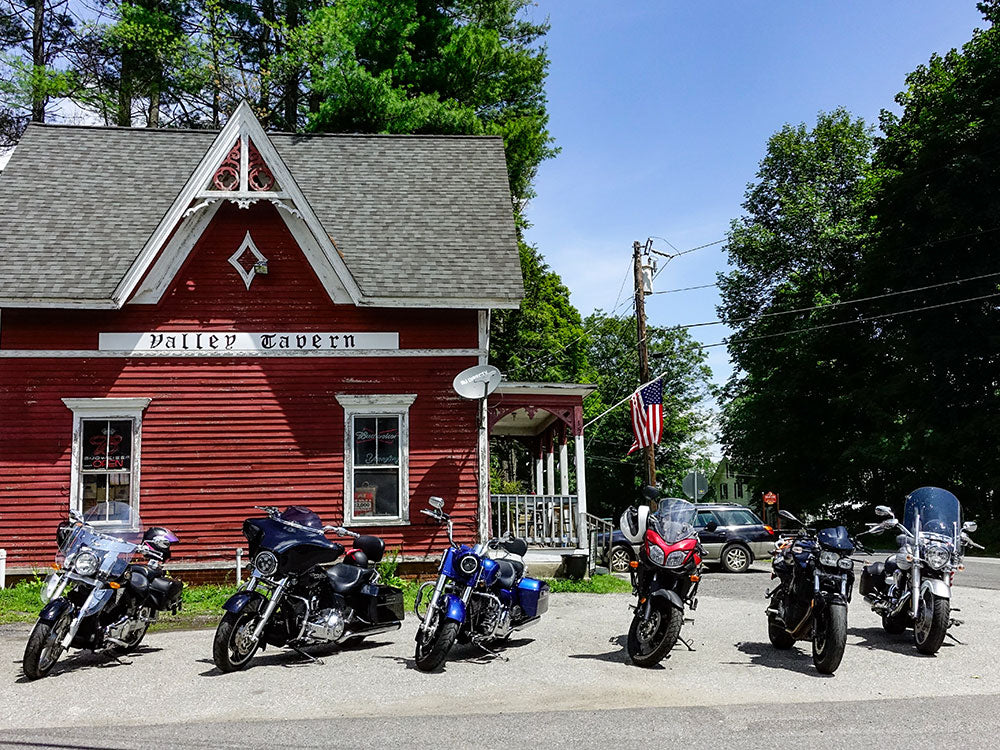Table of Content
1. Introduction
To be permitted to operate a motorcycle through Connecticut or “the Nutmeg State,” you must complete the process of acquiring a motorcycle license and learning about the rules of the road listed for the state.
Knowing the list of qualifications to become a motorcyclist will ensure that you put in the necessary research and practice. It is necessary to have the appropriate documentation, protective clothing, and motorcycle equipment ready to promote better safety when you ride. You also have to know proper roadside etiquette by offering a seat for your passenger and avoiding lane splitting.
2. Connecticut Motorcycle Insurance

When on the road, there is always the risk of an accident, whether due to bad weather, road conditions, or a distracted driver. If you are careful, you will avoid getting into collisions for most of your life. But in the rare event that you do, it helps to have insurance that will provide financial aid if anyone is hurt or property is damaged.
Here are the minimum costs that your motorcycle insurance plan must include for you to be allowed onto the road:
$25,000 for bodily injury to a person per accident
$50,000 for bodily injuries to multiple people per accident
$25,000 for property damages sustained per accident
Aside from the coverage you will need to pay for medical expenses and property damages, you must also acquire uninsured and underinsured motorist protection:
$25,000 for bodily injury to a person per accident
$50,000 for bodily injuries to multiple people per accident
You may also want to consider acquiring optional insurance coverage that is useful if your motorcycle suffers damage due to distinct conditions:
Collision coverage
Comprehensive coverage
3. Connecticut Motorcycle Helmet Laws

In Connecticut, riders under 18 years of age must wear a motorcycle helmet. If you are above the age restriction, you can choose to go without having protective headgear on.
However, while the age requirement for wearing motorcycle helmets gives adult riders the option of wearing a helmet only when they choose to, this, in turn, has caused an increase in motorcycle fatalities in recent years:
As stated by the NHTSA, riders are 28 times more likely to suffer fatal injuries compared to passenger car occupants
In Connecticut, an average of 50 riders are killed in collisions each year
In 2015, motorcycle helmets were estimated to have saved at least 12 and could have saved an additional 12 if more riders wore protective headgear
In 2020, there were estimated to be 56 motorcycle fatalities in Connecticut
You should pick out a motorcycle helmet made by the Snell Memorial Foundation and meets or exceeds the standards set by the U.S. Department of Transportation. The two types of motorcycle helmets that provide the best protection and visibility are the three-quarter and full-face helmets.
| Requirements | Three-Quarter Helmet | Full-Face Helmet |
|---|---|---|
| Has the Department of Transportation (DOT) sticker | ✔️ | ✔️ |
| Contours around your head to fit snugly due to comfort padding | ✔️ | ✔️ |
| No signs of damage (Ex:// cracks, loose padding, scratches, or frayed straps) | ✔️ | ✔️ |
| Has a face shield with no scratches | ❌ | ✔️ |
| Includes separate eye protection with no scratches (Ex:// goggles, glasses) | ✔️ | ❌ |
| Has a hard and durable outer shell that is shatter-resistant | ✔️ | ✔️ |
| Has a impact absorbing liner inside the helmet | ✔️ | ✔️ |
| Gives you a clear, peripheral view of your surroundings | ✔️ | ✔️ |
| Securely fastened with neck- or chin-strap | ✔️ | ✔️ |
| Allows airflow without fogging up | ✔️ | ✔️ |
| Can allow you to wear sunglasses underneath | ✔️ | ✔️ |
4. Connecticut Motorcycle License Laws

4.1 Connecticut Motorcycle Learner’s Permit
Application for a Connecticut motorcycle learner’s permit begins once you turn 16 years old.
You must pay a fee of $16 to be issued a Connecticut motorcycle learner’s permit plus an additional $40 testing fee for the required exams.
To be given the permit, you must fulfill all of the listed criteria:
-
If you are under the age of 18:
Have signature and consent from a parent or legal guardian
Present current Connecticut driver’s license
Provide proof of Connecticut residency
Provide proof of U.S. citizenship
Provide forms of identification
Take a photo
Pass the knowledge exam
Pass the vision exam
Pay the required fees
When operating with a Connecticut motorcycle learner’s permit, you are limited in how and where you can operate a motorcycle:
You can only operate during daylight hours
You cannot carry any passengers
You cannot operate on limited-access highways
You cannot operate outside Connecticut
You must be wearing protective clothing
4.2 Connecticut Motorcycle Endorsement
You are eligible to receive a Connecticut motorcycle endorsement if you are at least 16 years old or above.
You must pay a fee of $30 to have the motorcycle endorsement added to your Connecticut driver’s license plus an additional $40 testing fee for the required exams.
Listed below are the requirements you will need to fulfill to obtain a Connecticut motorcycle endorsement. Depending on your age when you approach the final step, the list of criteria may differ between motorcyclists:
| Requirements | Applicants Ages 16 to 17 | Applicants Ages 18 and Above |
|---|---|---|
| Have a valid Connecticut driver’s license | ✔️ | ✔️ |
| Complete a DMV approved motorcycle safety course | ✔️* | ✔️* |
| Held onto a Connecticut motorcycle learner’s permit for at least 60 days | ✔️ | ❌ |
| Cannot transport passengers 90 days after receiving motorcycle endorsement | ❌ | ✔️ |
| Cannot transport passengers for a period of six months after receiving motorcycle endorsement | ✔️ | ❌ |
| Provide proof of Connecticut motorcycle insurance | ✔️ | ✔️ |
| Provide proof of Connecticut vehicle registration | ✔️ | ✔️ |
| Fill out the appropriate driver’s license application | ✔️ | ✔️ |
| Must have consent of a parent or legal guardian if you are a minor | ✔️ | ❌ |
| Provide your social security number | ✔️ | ❌ |
| Pay required fees | ✔️ | ✔️ |
| Present valid photo I.D. | ✔️ | ✔️ |
| Take a photo | ✔️ | ✔️ |
| Take vision exam | ✔️ | ✔️ |
| Pass the knowledge test | ✔️* | ✔️* |
| Pass the road skills test | ✔️* | ✔️* |
| Provide proof of U.S. citizenship | ✔️ | ✔️ |
| Provide proof of residency in Connecticut | ✔️ | ✔️ |
*Submitting a Certificate of Completion for a motorcycle safety course approved by the DMV in Connecticut will allow you to waive the roads skills test.
4.3 Connecticut Motorcycle License Test
Written Portion:
Complete 16 multiple-choice questions
Questions will be based on content from Connecticut Motorcycle Operator Manual & Connecticut Driver’s Manual
Will be tested on an understanding of road rules and safe riding practices
Requires a passing grade of 75% or higher
Riding Skills Portion:
Will be conducted in a controlled, off-street area or an actual traffic environment
Your motorcycle will be subjected to a pre-ride inspection to ensure it meets safety standards
Demonstrate a basic understanding of motorcycle operation
You will be tested on your ability to stay within the speed limit, adjusting speed and position, maintaining visibility, operating under stress, accelerating, braking, turning, stopping, and swerving
The examiner will grade you based on how well you ride at safe speeds, stay within the lanes, and demonstrate riding maneuvers
5. Connecticut Passenger Laws
In Connecticut, passengers do not have to fall under a certain age range. Passengers under 18 years old are only permitted to ride with you if they are wearing a three-quarter or a full-face helmet.
The equipment required to transport someone includes a passenger seat, handholds, and footrests.
The passenger can only sit along the sides or at the rear of your motorcycle. The passenger seat can only be fixed to these positions aboard the motorcycle:
Rear of a large driver’s seat
Towards the rear as a separate saddle
Fixed to the side as a sidecar
While there is no age restriction, you should refrain from transporting young children or the elderly. Characteristics to look for in a motorcycle passenger include the following
Your passenger must be able to reach the footrests
Your passenger must wear an approved motorcycle helmet
Your passenger cannot be carrying any packages
Your passenger must be able to understand and follow your directions
6. Connecticut Lane Splitting Laws

Motorcyclists cannot try lane splitting while in Connecticut. The following examples listed below are considered part of lane splitting:
Riding on top of the dividing lines between lanes
Riding in between adjacent rows of stopped vehicles
Overtaking a larger vehicle ahead in the same lane
However, because motorcycles occupy little space on the road compared to four-wheelers, riders are allowed to try the following in Connecticut:
You are allowed to make full use of the space within a single lane
-
You can only share a lane with another motorcycle if:
Both parties stay apart at least two abreast
Both parties consent beforehand
7. Connecticut Motorcycle Equipment Requirements

Because you never know when a part of your motorcycle will come loose or fail to function properly, you are expected to bring your motorcycle to an inspection station once in a while throughout the year.
Rather than focus on the exterior, get your hands dirty and shift the parts so you can see into the deeper inner workings of your motorcycle. The motorcycle parts you should check are still functioning include:
Horn
Wheels
Tires
Handlebars
Front & Rear Brakes
Controls
Headlight
Taillight
Brake Light
Turn Signals
Exhaust System
Muffler
Rearview Mirrors
8. Sources
- Motorcycle Operator Manual - Connecticut Department of Motor Vehicles
- State of Connecticut Department of Motor Vehicles - Connecticut Vehicle Insurance Requirements
- State of Connecticut Insurance Department - Automobile and Motorcycle Insurance Identification Cards
- Connecticut Department of Transportation Revs Up Motorcycle Safety Awareness, Reminds Motorists to Share the Road
- Universal Motorcycle Helmet Laws
- State of Connecticut Department of Motor Vehicles - Motorcycle License
- State of Connecticut Department of Motor Vehicles - Obtaining a Motorcycle Learner’s Permit
- State of Connecticut Department of Motor Vehicles - Obtaining a Motorcycle Endorsement












Leave a comment
All comments are moderated before being published.
This site is protected by hCaptcha and the hCaptcha Privacy Policy and Terms of Service apply.